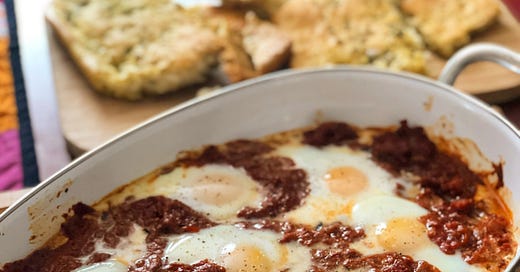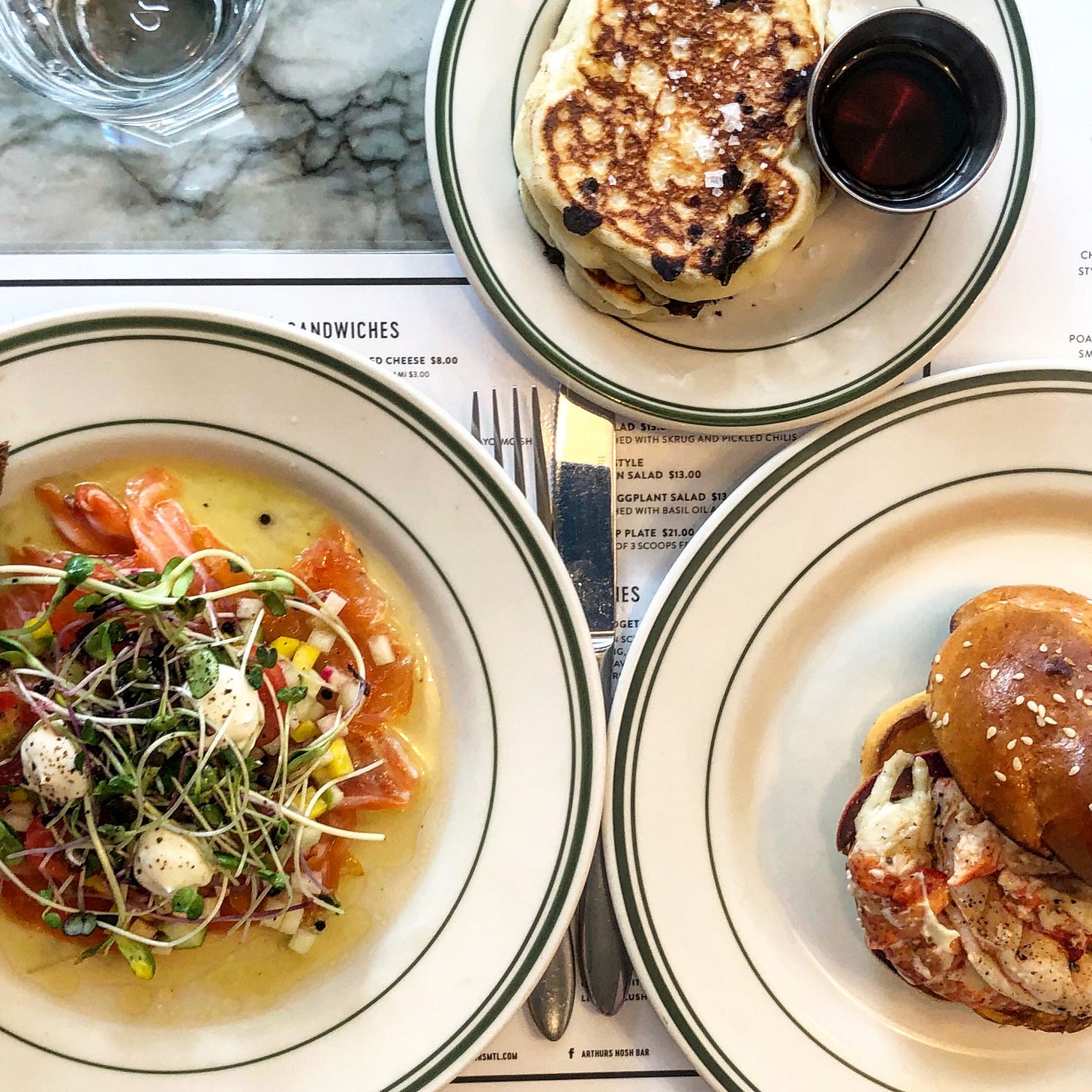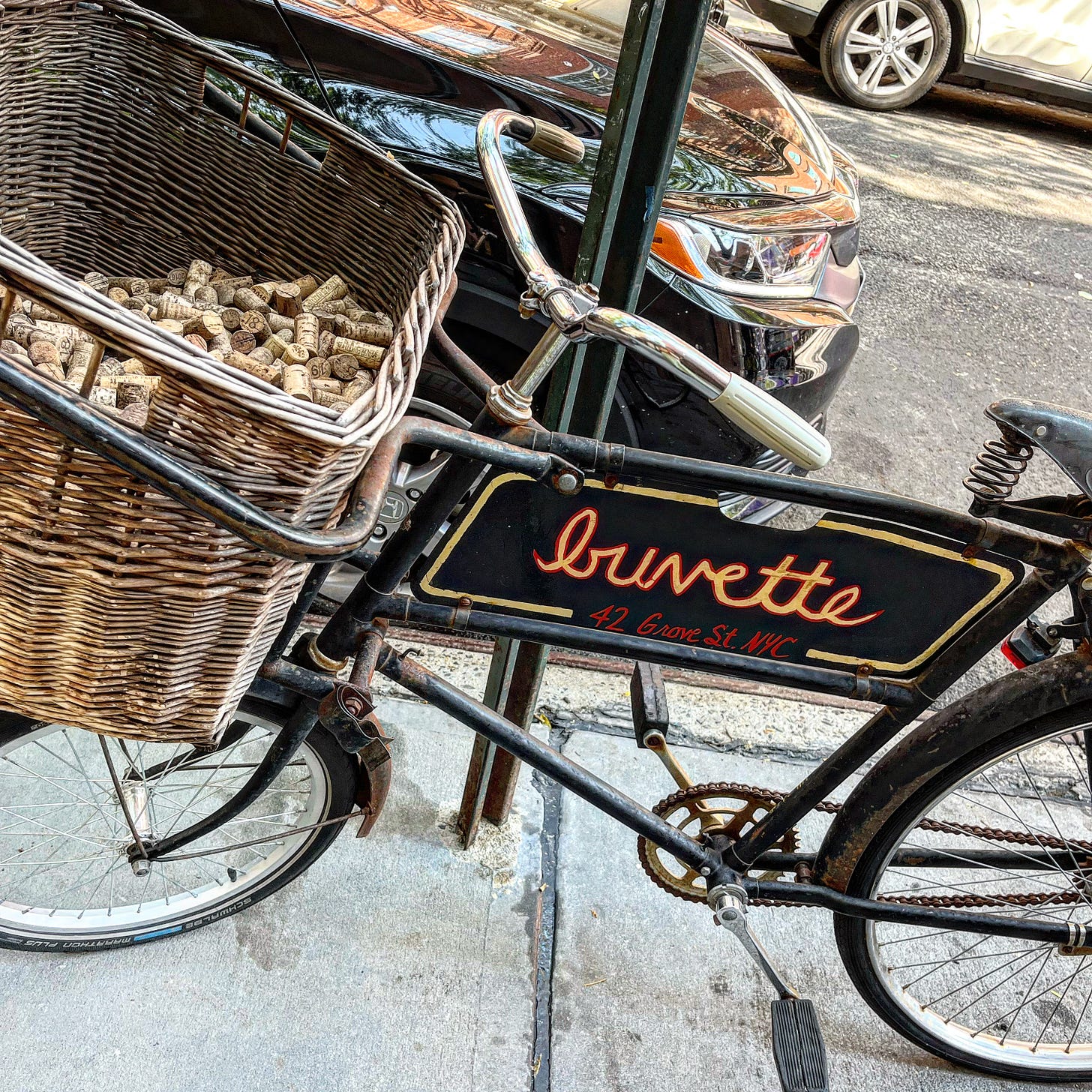Breakfast may well be my favourite meal of the day.
Unfussy, comforting, savoury and sweet all at once, it’s the only time when dessert masquerades as a main course, fruit and bacon cosy up to each other, coffee and Champagne commingle, and you can get your veggies in a Bloody Mary.
Breakfasts like these live for the weekend. Not for a harried workday a platter of pancakes or huevos rancheros. The fresh hot coffee of Tuesday morning becomes a frothy latte on a lazy Sunday morning. Breakfast, like the most accommodating of hosts, can cater to every taste and proclivity. Gluten free, vegan, meat and potatoes - there’s a breakfast dish for all.
So why is it that breakfast stirs up so much controversy?
“The low-fat craze of the 1990s, the low-carb craze of the 2000s, today’s anxieties about animal cruelty and environmental sustainability and GMOs and gluten and longevity and, in general, the moral dimensions of a globalized food system—all of them are embodied in breakfast.”
The Most Contentious Meal of the Day: Megan Garber, The Atlantic
A meal eaten in the morning is a relatively recent Western phenomenon. Breakfast - literally “breaking fast,” signalled the end of fasting from the day before. Initially having religious significance, eating too early in the day was seen to be a sign of human weakness at best, and an affront to God at worst.
Like so much else, the industrialization of the world changed all that. As the idea of a “work day” took hold, first with labourers and servants in the 15th century, eating for sustenance became a necessity. Once the Catholic Church declared that “liquidum non frangit jejunum” (liquid doesn’t break the fast), coffee, tea and drinking chocolate officially became the way to kick off the day. More hearty fare soon followed. The idea really took hold in England and it wasn’t long before both upstairs and downstairs were having the “full English” - a fry up of bacon, sausages, eggs, tomatoes, mushrooms, and toast. A very full English might also have baked beans and black pudding.
Naturally, indigestion followed.
Coming full circle
The notion of a healthy breakfast was spurred on by - once again - the way work was changing. The Industrial Revolution created more sedentary work, and with it, the idea that convenience, not cooking, could make breakfast easy again.
Enter cereal. First conceived by John Harvey Kellogg, cereal had its roots in the new “clean living” movement started by Seventh Day Adventists (you can read about the birth of cereal and get a delicious recipe for granola from my archives here).
Today, we’ve come full circle back to the idea that “breaking fast” is best done later in the day, and intermittent fasting is the new way to eat. In an effort to stave off the sluggishness and hibernating tendencies of the long winter ahead, I’ve started eating later in the day.
Eating later, especially on the weekend, brings us into brunch territory, and back to the deliciousness of all the food groups playing together. And that’s something I’m willing to wait for.
Uova al forno
From Buvette, the pleasure of good food, Jodi Williams
serves four
There is a tiny jewel-box of a place in the West Village in New York that is the perfect place for breakfast. You might spot the signature bicycle outside its doors first, but you’re more likely to notice the patient patrons waiting for a coveted seat inside.
Buvette transports you to your favourite café in Europe in an instant. Tiny, buzzy, with bistro tables crowded up against one another, this is a place where you want to eat everything on the tidy but perfect menu.
When I can’t be in New York, I can still get a taste of Chef Jodi Williams’ magic by dipping into her wonderful cookbook. This recipe for uova al forno - baked eggs - takes its cue from Italy and reimagines pasta all’amatriciana as the perfect breakfast dish. The component parts can be made ahead, ready for when you roll out of bed on Sunday morning.
Note: Guanciale is cured pork jowls traditionally used in the making of pasta all’amatriciana. It can be found in Italian speciality stores or grocers.
Ingredients
1 28 ounce can whole peeled San Marzano tomatoes (with juice)
2 tablespoon extra-virgin olive oil
Pinch of red chili flakes
1 clove of garlic, peeled and minced
1½ teaspoons kosher salt
½ pound pancetta, smoked bacon or guanciale (see headnote) cut into 1 inch pieces
1 large yellow onion, peeled and thickly sliced
4 to 8 large eggs
¾ cup grated Pecorino Romano cheese
Salt and pepper to taste
Heat oven to 400F.
Pour the entire can of tomatoes and their juices into a medium sized bowl. Using your hands, break up the tomatoes until they are crushed.
In a medium sized sauce pan, heat the olive oil. Add minced garlic and red chili flakes. Sauté for 30 seconds. Add tomatoes and salt and bring to a boil, then reduce heat and allow to simmer for approximately 30 minutes or until slightly thickened.
While the tomatoes are cooking, cook the pancetta in large deep ovenproof skillet over medium high heat for 2-3 minutes or until the fat has rendered.
Add onions to the pancetta, reduce heat to medium and cook until onions are softened and slightly browned and the pancetta has crisped up, about 15 minutes, stirring frequently to prevent sticking.
Transfer tomatoes to the skillet with pancetta and onions. Taste and adjust for salt.
Divide the mixture between four ramekins or an ovenproof casserole dish. You can also leave the mixture in the skillet.
Make an indentation in the sauce and crack the eggs directly into them, 1-2 eggs for individual ramekins or 6-8 for the casserole or skillet. Lightly season with salt and pepper.
Bake until egg whites are just about set. Start checking the eggs after 12 minutes.
Shower each dish or the casserole with a generous amount of Pecorino Romano. Serve immediately.








